Powdery mildew and downy mildew on cabbage
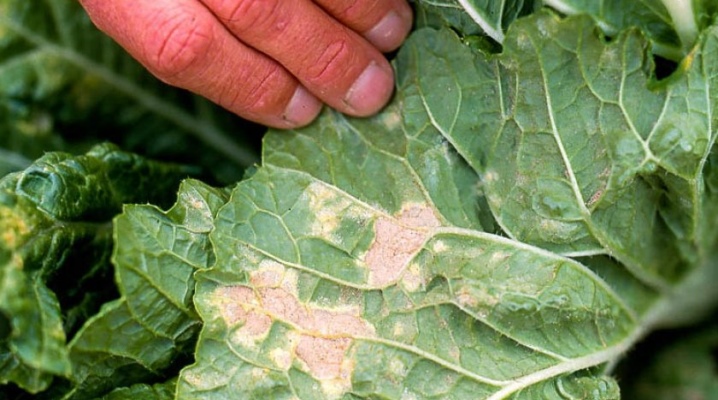
Powdery mildew and downy mildew on cabbage very often challenge gardeners and farmers. It is vital for all of them to know what such a pathology looks like and how to treat it on cauliflower and white cabbage. Basic preventive measures on cabbage seedlings are no less relevant to eliminate the occurrence of a problem.
Description of diseases
Powdery mildew is a disease provoked by miniature fungi belonging to the ectoparasitic group. The spores of such an infection can be spread in a variety of ways. If the cabbage is affected by powdery mildew, then it looks covered with a whitish bloom. This plaque is exactly the mycelium. When it ripens, small drops are formed on the surface, resembling dew, but the white tint still persists - this is exactly the kind that gave the name to the disease.
The typical course of the pathological process implies its spread from the bottom up. At first, spots appear on the leaves. At an early stage, they look just like a plaque that can be easily erased when touched. But, of course, it is impossible to remove all disputes in this way. Soon the foliage will begin to wither and fall off - of course, if no special measures are taken.
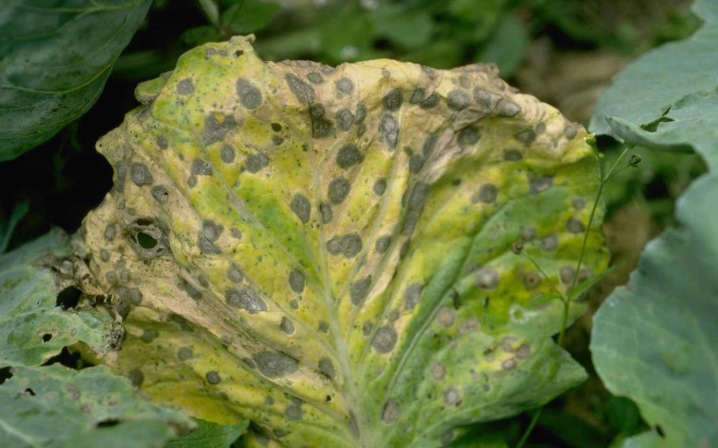
On cabbage seedlings, powdery mildew forms pale yellow spots that seem to blur. If you look at the leaf from below, you can see a loose whitish bloom there. The pathology develops as intensively as possible in the greenhouse, where the requirements of agricultural technology are violated. There, she can destroy the culture in a matter of days. The infection can develop on both cauliflower and white cabbage.
On adult specimens, signs of the disease appear primarily on the lower leaves. If peronosporosis (downy mildew) develops on cabbage, then the following will suffer:
- pedicels;
- leaves;
- shoots.
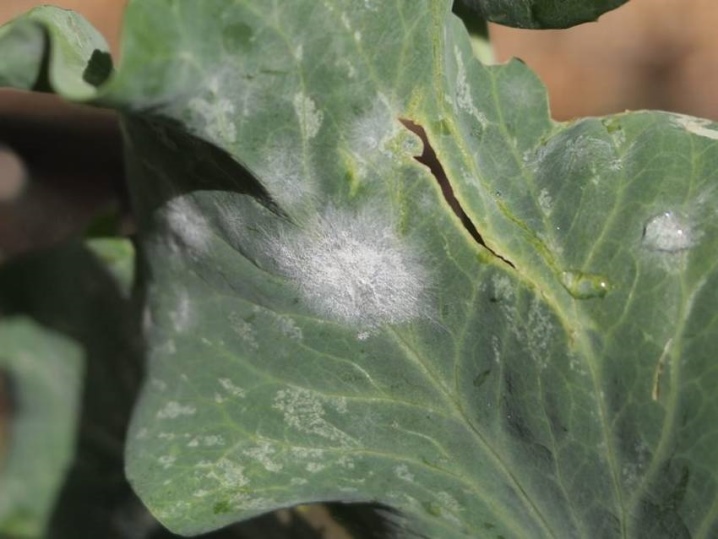
They develop brown patches that are often described as "leathery" in appearance. Sometimes there are also black spots. White bloom is not very pronounced. It is associated with mold. The size of the spots can vary greatly.
Reasons for the appearance
Peronosporosis can overtake cabbage wherever it is grown on a permanent basis. The main source of the problem is queen cells infected with the fungus. It has been established that a harmful microorganism can also remain for a long time in the seed coat and on the remains of former vegetation. Studies have shown that the viability of spores reaches 5-6 years. Peronosporosis actively spreads if long heavy rains fall; in dry weather, it is much less common, if found at all.
Powdery mildew is again a fungal disease. And for its spread, contact with fungal spores is also necessary. They are carried by wind and water. Problems are also created due to the transfer of the pathogen:
- insects;
- planting material;
- soil;
- tools;
- contact clothing;
- on hands.
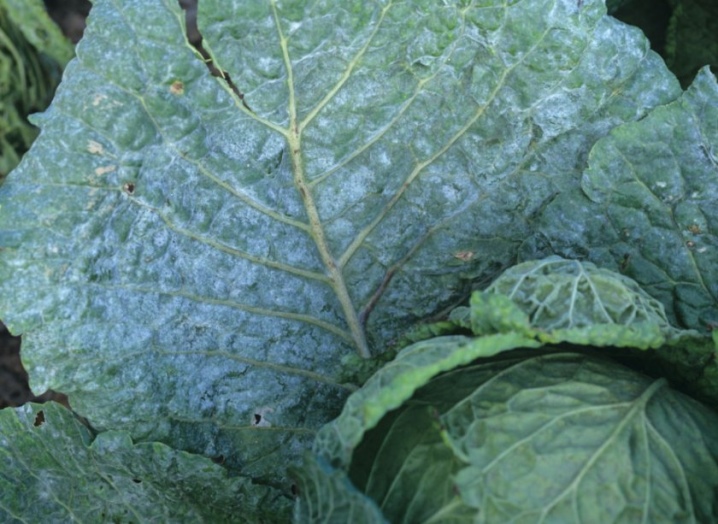
But even if the pathogen of powdery mildew got on the plant, this does not automatically mean that it will be affected. On the contrary, there are several conditions that contribute to the active development of the infection. Among them, the combination of high humidity and high temperature occupies an important place. Powdery mildew complaints are also exacerbated if hot dry days are often followed by rainy periods. Another problem is associated with:
- calcium deficiency;
- excessive nitrogen intake;
- very active watering;
- too sparse irrigation;
- carelessness of gardeners and gardeners.
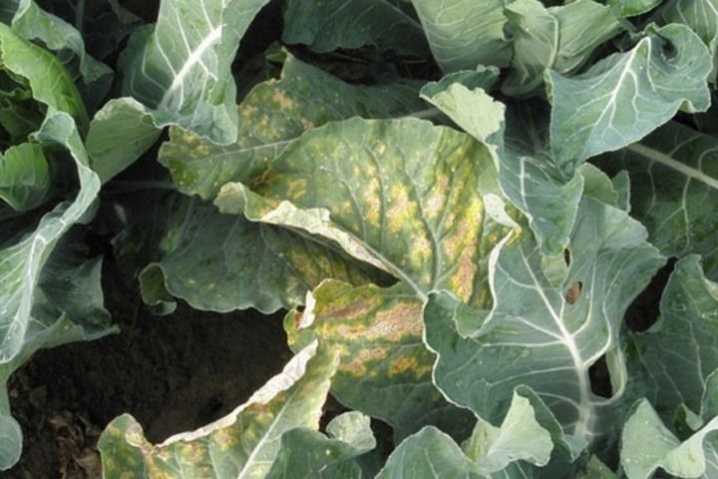
How to treat?
The tactics of struggle, allowing you to get rid of peronosporosis, are not too difficult. They start with the use of fungicides that are designed specifically for the case of this disease. To prevent the pathology from reappearing, spraying with a diluted Bordeaux liquid will be required. If there are signs of powdery mildew, you need to treat the cabbage with Fitosporin-M. This is a relatively safe biological drug that can be used once every 3 months until the fungus is eradicated.
Against powdery mildew they also take:
- "Rovral";
- Fundazol;
- "Ditan M-45".
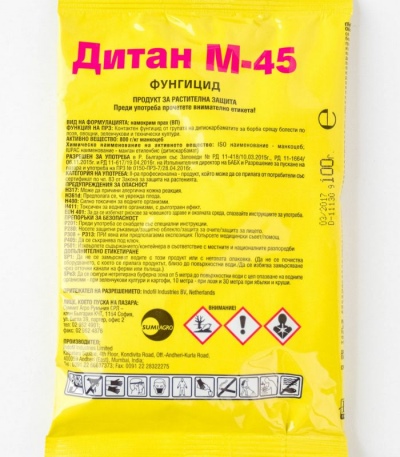
From folk remedies, copper sulfate helps a lot. Bordeaux liquid also does not deal with infection so badly. Still, all pathological fungi do not like sulfur solution extremely. It is also necessary to use agronomic control measures. If an infection occurs, it will be necessary to reduce watering and nitrogen fertilizer consumption.
Prevention measures
To prevent cabbage from being affected by peronosporosis and powdery mildew, you need:
- select more resistant varieties;
- exclude thickening of plantings;
- remove all residues of vegetation when harvesting;
- follow the principles of rational crop rotation;
- select only perfectly healthy seed;
- destroy weeds;
- disinfect the instrument;
- sprinkle plantings only in the morning;
- do not get too carried away with nitrogen fertilizing.















The comment was sent successfully.